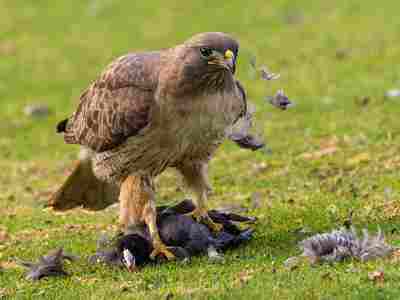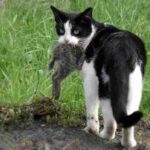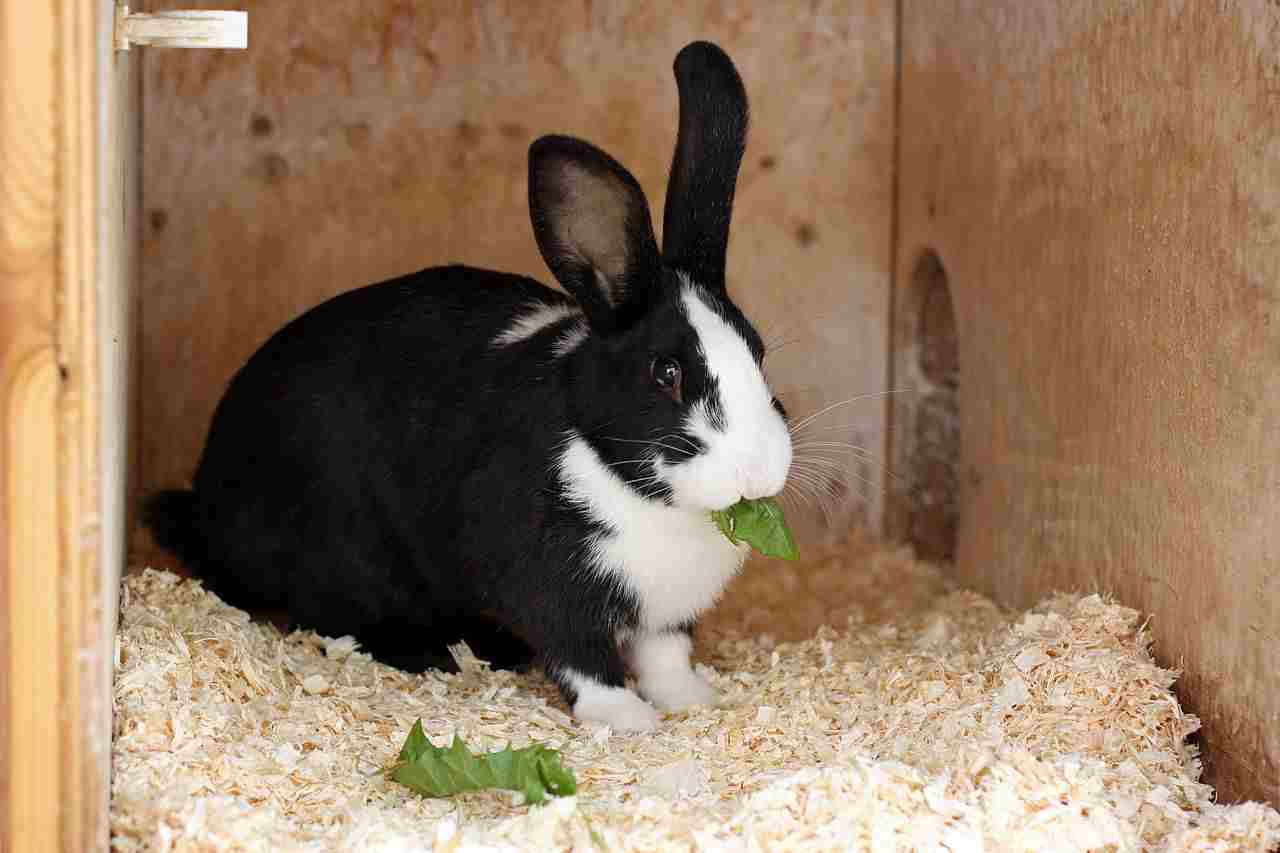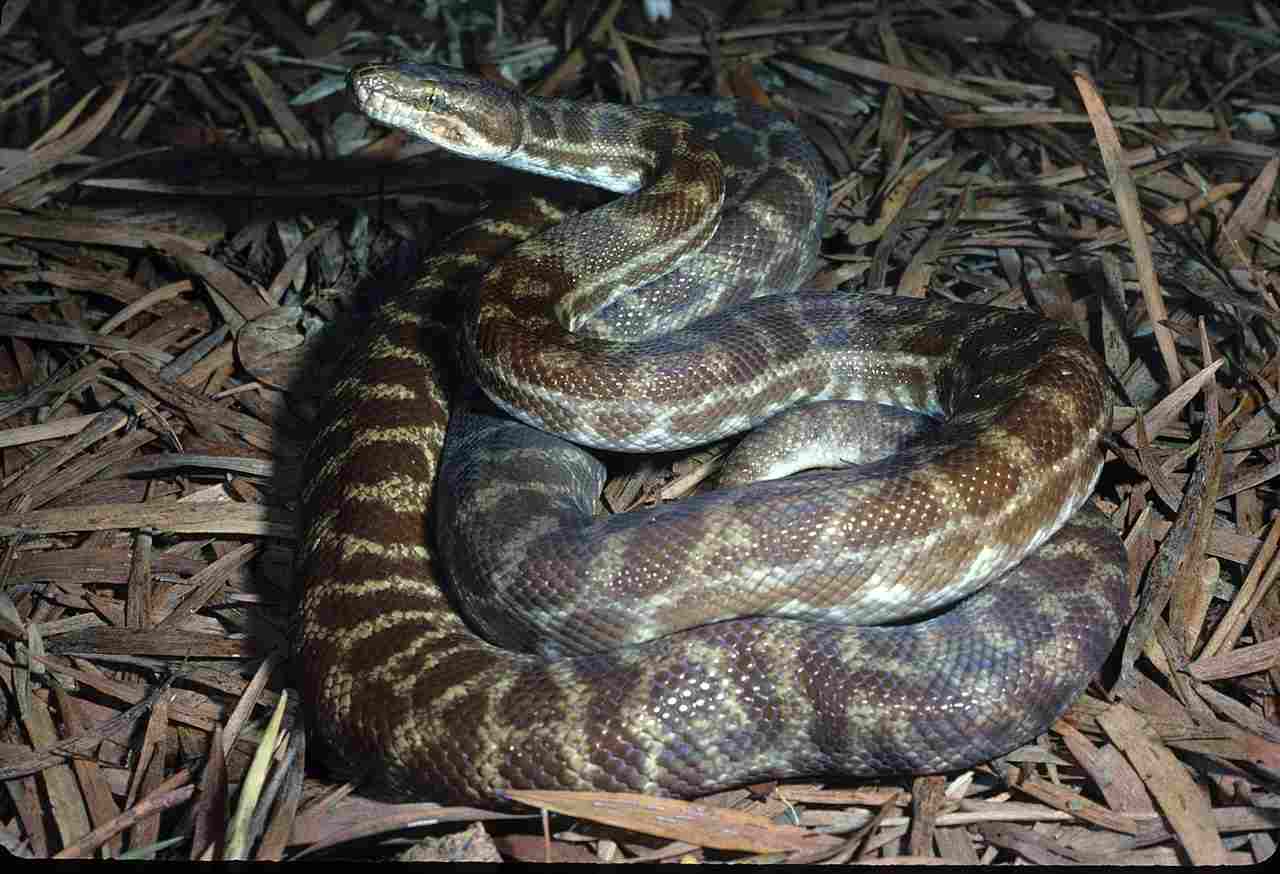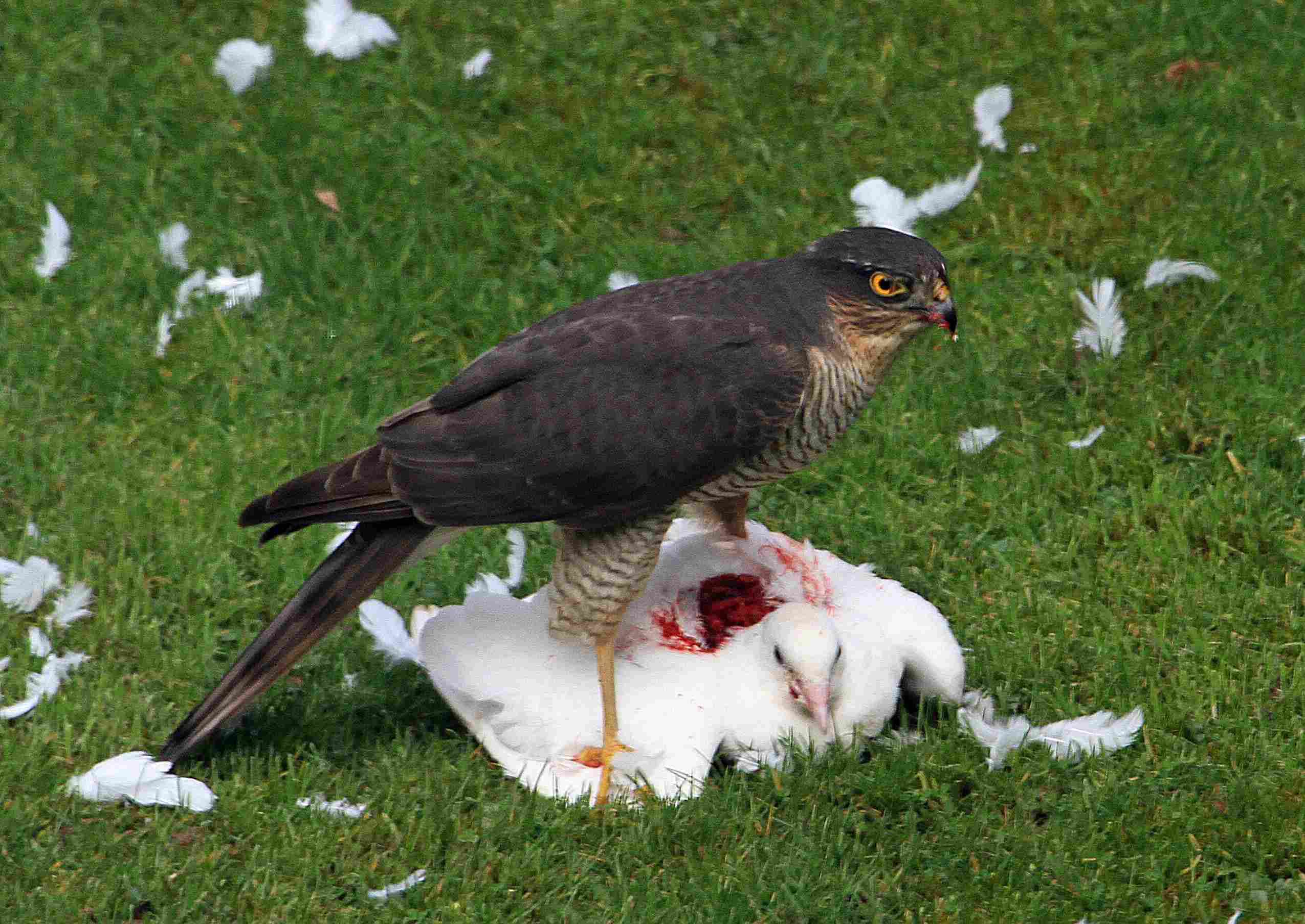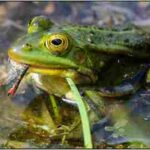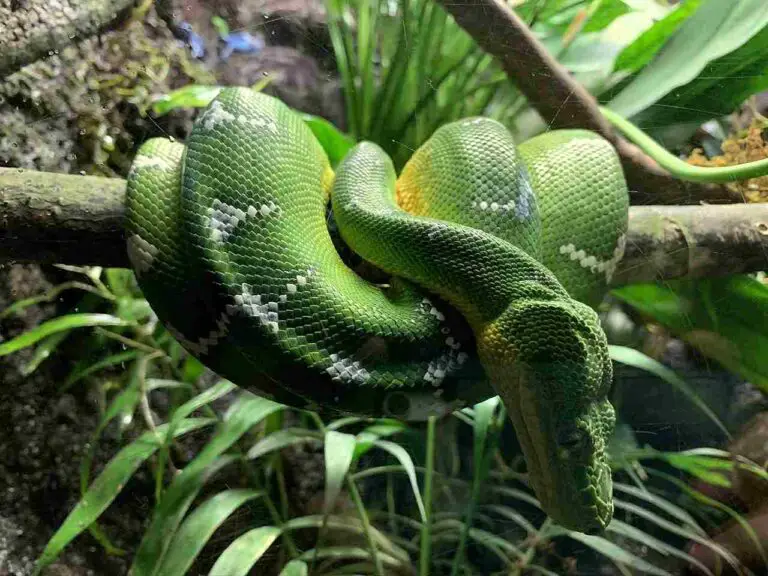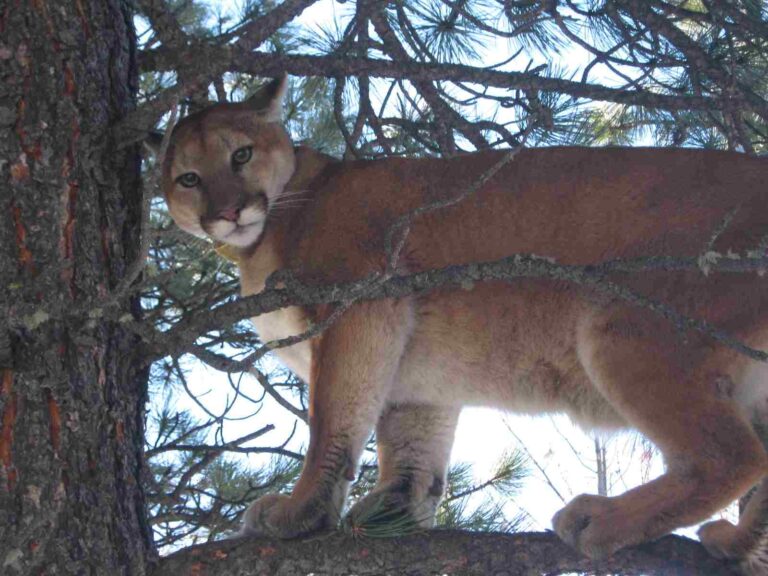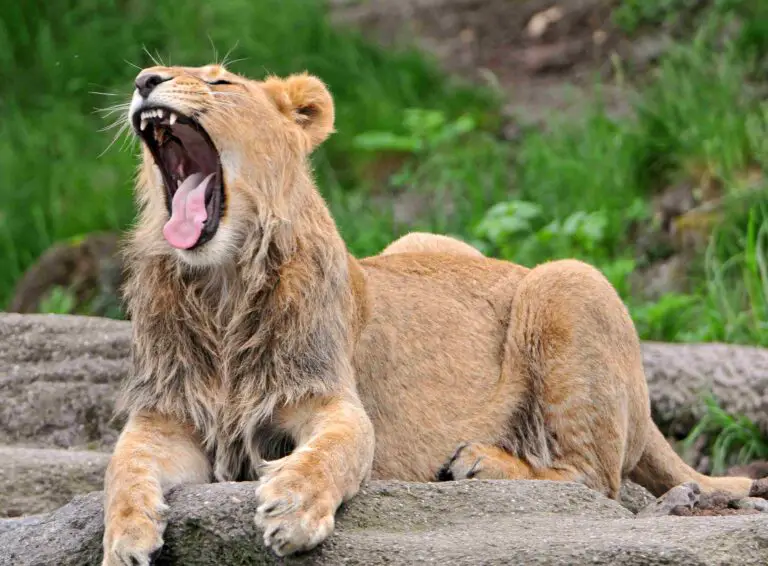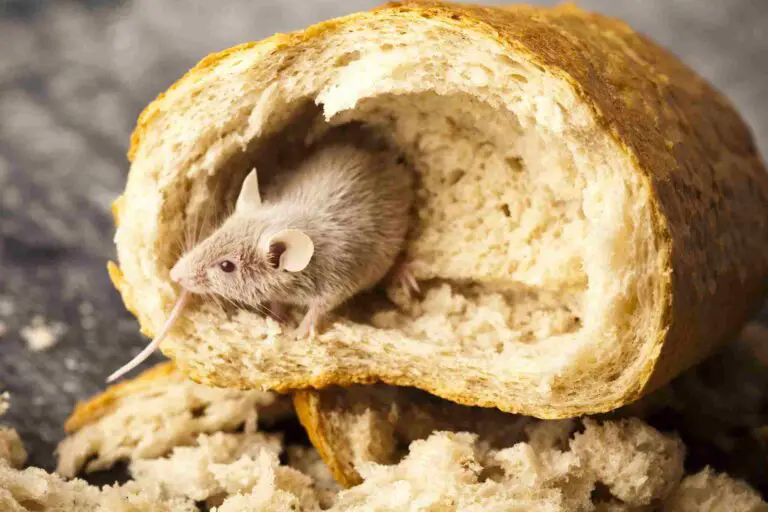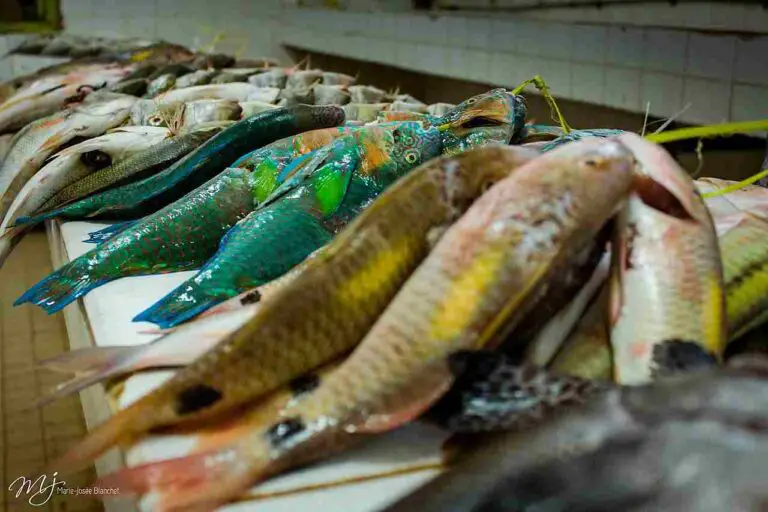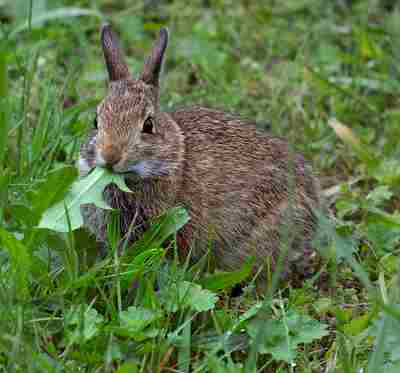What Type of Consumer is a Hawk? Overview of Hawk Feeding Behavior
Hawks are often tertiary consumers because they prey on animals like rabbits, small snakes, and frogs, which include primary and secondary consumers. Understanding the role of hawks in the food chain and their classification as consumers is essential to grasp their significance in the ecosystem.
In an ecosystem, organisms are interconnected through a complex web of relationships. This web is known as the food chain, which depicts the flow of energy from one organism to another.
At the base of the food chain are producers, such as plants, which convert sunlight into energy through photosynthesis. These producers are then consumed by primary consumers, also known as herbivores, which feed exclusively on plants.
Moving up the food chain, we encounter secondary consumers, which are carnivores that prey on herbivores. These secondary consumers play a crucial role in regulating the population of primary consumers and maintaining the balance of the ecosystem. Hawks, however, go a step further and occupy the position of tertiary consumers.
As tertiary consumers, hawks are at the top of the food chain in their respective habitats. They feed on a variety of animals, including rabbits, small snakes, and frogs. These prey animals are themselves consumers, either primary or secondary, as they rely on plants or other animals for sustenance. By preying on these animals, hawks help control their populations and prevent them from overwhelming the ecosystem.
Hawks are particularly well-suited for their role as tertiary consumers due to their exceptional hunting abilities. With keen eyesight and sharp talons, they are able to spot and capture their prey with precision and efficiency. Their predatory nature allows them to maintain a healthy balance within their ecosystem by controlling the population of smaller animals.
In addition to their role as tertiary consumers, hawks also contribute to the overall health of the ecosystem through the process of predation. Predation is a natural mechanism that helps eliminate weak or sick individuals from a population, ensuring that only the fittest survive and reproduce. By targeting weaker prey animals, hawks indirectly contribute to the overall strength and resilience of the ecosystem.
It is important to note that hawks are not the only consumers in their respective habitats. They coexist with other predators, such as foxes and coyotes, which occupy different niches within the food chain. Each predator plays a unique role in maintaining the delicate balance of the ecosystem, and their interactions shape the dynamics of the community as a whole.
By understanding the classification of hawks as consumers and their position in the food chain, we can appreciate their significance in maintaining the balance and health of the ecosystem. Hawks, as tertiary consumers, play a vital role in regulating the populations of primary and secondary consumers.
Their exceptional hunting abilities and predatory nature allow them to control the population of smaller animals, contributing to the overall strength and resilience of the ecosystem.
Coexisting with other predators, hawks shape the dynamics of the community and help maintain the delicate balance within their habitats. As we delve deeper into the world of hawks, we will explore their role as secondary consumers and their classification as omnivores.
Is A Hawk a Tertiary Consumer?
Hawks are often classified as tertiary consumers in the food chain due to their feeding habits and position at the top of the trophic hierarchy. As tertiary consumers, hawks play a crucial role in maintaining the balance and health of the ecosystem.
In an ecosystem, organisms are interconnected through a complex web of relationships known as the food chain. At the base of the food chain are producers, such as plants, which convert sunlight into energy through photosynthesis.
These producers are then consumed by primary consumers, also known as herbivores, which feed exclusively on plants. Moving up the food chain, we encounter secondary consumers, which are carnivores that prey on herbivores. Hawks, however, go a step further and occupy the position of tertiary consumers.
Tertiary consumers are organisms that feed on other carnivores or secondary consumers. In the case of hawks, they prey on animals like rabbits, small snakes, and frogs, which are themselves consumers, either primary or secondary. By preying on these animals, hawks help control their populations and prevent them from overwhelming the ecosystem.
The role of hawks as tertiary consumers is essential for maintaining the balance within their respective habitats. By controlling the population of smaller animals, hawks prevent overgrazing and ensure the survival of other species. This regulation of population sizes helps to maintain the overall health and stability of the ecosystem.
Hawks are particularly well-suited for their role as tertiary consumers due to their exceptional hunting abilities.
With their keen eyesight and sharp talons, they are able to spot and capture their prey with precision and efficiency. Their predatory nature allows them to maintain a healthy balance within their ecosystem by controlling the population of smaller animals.
In addition to their role as tertiary consumers, hawks also contribute to the overall health of the ecosystem through the process of predation.
Predation is a natural mechanism that helps eliminate weak or sick individuals from a population, ensuring that only the fittest survive and reproduce. By targeting weaker prey animals, hawks indirectly contribute to the overall strength and resilience of the ecosystem.
It is important to note that hawks are not the only consumers in their respective habitats. They coexist with other predators, such as foxes and coyotes, which occupy different niches within the food chain. Each predator plays a unique role in maintaining the delicate balance of the ecosystem, and their interactions shape the dynamics of the community as a whole.
Therefore, in most cases, hawks are classified as tertiary consumers in the food chain due to their feeding habits and position at the top of the trophic hierarchy.
As tertiary consumers, hawks play a vital role in regulating the populations of primary and secondary consumers. Their exceptional hunting abilities and predatory nature allow them to control the population of smaller animals, contributing to the overall strength and resilience of the ecosystem. Coexisting with other predators, hawks shape the dynamics of the community and help maintain the delicate balance within their habitats.
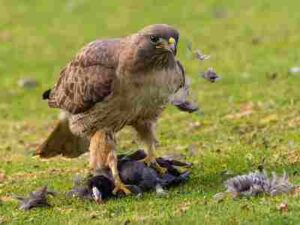
Are Hawks Secondary Consumers?
Hawks can indeed be classified as secondary consumers in certain ecosystems and food chains. As secondary consumers, hawks occupy a position in the trophic hierarchy where there are organisms above them that can prey on them. One example of such an ecosystem is the grassland, where the red-tailed hawk may fall prey to eagles, falcons, owls, and larger hawks.
To understand why hawks can be considered secondary consumers, let’s take a closer look at the concept of a food chain.
A food chain is a linear representation of the flow of energy and nutrients in an ecosystem. It starts with producers, such as plants, which convert sunlight into energy through photosynthesis.
These producers are then consumed by primary consumers, also known as herbivores, which feed exclusively on plants. Moving up the food chain, we encounter secondary consumers, which are carnivores that prey on herbivores. In this case, hawks feed on animals like frogs, which are themselves consumers, either primary or secondary.
In a specific food chain where the hawk is a secondary consumer, the following sequence can be observed: grass→aphid→frog→hawk→golden eagle.
In this example, the grass serves as the primary producer, the aphid feeds on the grass as a primary consumer, the frog preys on the aphid as a secondary consumer, and finally, the hawk preys on the frog as a secondary consumer. This food chain demonstrates the position of the hawk as a secondary consumer, as it feeds on organisms that are themselves consumers.
It is important to note that the classification of hawks as secondary consumers is not universal across all ecosystems and food chains. The specific role of hawks within a given ecosystem depends on various factors, including the availability of prey and the presence of other predators. In some cases, hawks may occupy a higher trophic level as tertiary consumers, while in others, they may function as apex predators at the top of the food chain.
In the context of grasslands, hawks can be considered secondary consumers due to the presence of other organisms above them in the trophic hierarchy that can prey on them. This includes larger hawks, eagles, falcons, and owls. These predators play an important role in regulating the population of hawks and maintaining the balance within the grassland ecosystem.
The classification of hawks as secondary consumers highlights their dependence on the availability of prey and the interactions with other organisms within their ecosystem. As secondary consumers, hawks contribute to the flow of energy and nutrients through the food chain, playing a vital role in the overall dynamics and stability of the ecosystem.
Hawks can be classified as secondary consumers in certain ecosystems and food chains. Their position in the trophic hierarchy is determined by the presence of organisms above them that can prey on them.
In grasslands, for example, hawks may fall prey to larger hawks, eagles, falcons, and owls, making them secondary consumers. Understanding the role of hawks as secondary consumers helps us appreciate their contribution to the balance and functioning of ecosystems.
Is a Hawk a Consumer, Producer or Decomposer?
A hawk is a carnivorous consumer, which means it obtains its energy and nutrients by consuming other organisms. However, it is not classified as a consumer producer or a decomposer. Let’s explore why.
Firstly, a consumer producer is an organism that can both produce its own food through photosynthesis and consume other organisms for energy. This ability to produce food is achieved through the presence of chlorophyll, which allows the organism to convert sunlight into energy. However, hawks do not possess chlorophyll and therefore cannot produce their own food through photosynthesis. They rely solely on consuming other animals as their source of energy.
On the other hand, a decomposer is an organism that feeds on organic remains, such as dead plants and animals, and breaks them down into simpler substances. Decomposers play a crucial role in the ecosystem by recycling nutrients and returning them to the soil. However, hawks do not typically feed on organic remains. Their diet consists mainly of live prey, such as snakes, lizards, frogs, insects, and smaller birds. They are not involved in the decomposition process.
Hawks are highly specialized predators that have evolved to be efficient hunters. They possess sharp beaks and talons, excellent eyesight, and powerful flight capabilities, all of which enable them to capture and kill their prey. Their diet consists primarily of other animals, which they hunt and consume for sustenance.
In the context of the food chain, hawks occupy the position of a secondary consumer. They feed on animals that are themselves consumers, either primary or secondary. For example, in a grassland ecosystem, the food chain may consist of grass as the primary producer, aphids as primary consumers, frogs as secondary consumers, and hawks as secondary consumers. Hawks prey on frogs, which are consumers, and obtain their energy and nutrients from them.
The classification of hawks as consumers highlights their role in the flow of energy and nutrients through the food chain. As secondary consumers, they contribute to the transfer of energy from lower trophic levels to higher trophic levels. This energy flow is essential for the functioning and stability of ecosystems.
A hawk can be described as a carnivorous consumer that obtains its energy and nutrients by consuming other organisms. It is not a consumer producer because it lacks the ability to produce its own food through photosynthesis. It is also not a decomposer because it does not typically feed on organic remains. Hawks play a vital role as secondary consumers in the food chain, contributing to the flow of energy and nutrients within ecosystems.
Is a Hawk an Omnivore?
While hawks are known for their carnivorous diet, it is important to note that they are not omnivores. Hawks are strictly classified as carnivores, meaning they primarily consume other animals for sustenance. Unlike omnivores, which have the ability to consume both plant and animal matter, hawks rely solely on smaller animals as their food source.
Hawks are skilled hunters and have a diverse range of prey. They feed on a variety of smaller animals, including snakes, lizards, frogs, and insects. These creatures make up the majority of their diet, providing them with the necessary energy and nutrients to survive. Additionally, hawks are known to prey on smaller birds, such as doves, starlings, and blackbirds.
The fact that hawks exclusively consume other animals distinguishes them from omnivores. Omnivores, such as humans and bears, have the ability to consume both plant and animal matter. This dietary flexibility allows them to adapt to different environments and obtain a wider range of nutrients. Hawks, on the other hand, have evolved to be specialized hunters, relying solely on the consumption of other animals.
The specialization of hawks as carnivores is evident in their physical adaptations. They possess sharp beaks and talons, which are essential for capturing and killing their prey. Hawks also have excellent eyesight, allowing them to spot their prey from great distances. These adaptations enable them to effectively hunt and consume other animals.
In contrast, omnivores have adaptations that allow them to consume both plant and animal matter. For example, humans have a diverse set of teeth that are capable of chewing both meat and plant-based foods. Additionally, omnivores have a longer digestive system that is able to process a wider range of nutrients from different sources. These adaptations reflect the dietary flexibility of omnivores, which hawks do not possess.
Hawks are not omnivores but rather strict carnivores. They rely exclusively on consuming other animals, such as snakes, lizards, frogs, insects, and smaller birds, for their energy and nutrient needs. Their specialized hunting adaptations and dietary preferences distinguish them from omnivores, which have the ability to consume both plant and animal matter. Understanding the dietary habits of hawks helps to shed light on their role in the ecosystem and their position within the food chain.
Is a Hawk a Consumer or Predator?
A hawk is both a consumer and a predator because it depends on other animals as food sources. A predator is an organism that actively predates (hunts) other organisms to consume, making all predators consumers. While, technically, herbivores are the predators of plants, the colloquial sense of the word refers to animals that hunt other animals. Regardless, hawks fall under both categories.
As a consumer, hawks play a vital role in the ecosystem. They are considered secondary consumers, which means they feed on primary consumers, such as rodents and small mammals. By consuming these smaller animals, hawks help to regulate their populations, preventing them from becoming overabundant and causing damage to the ecosystem.
Hawks are particularly important in grassland ecosystems, where they help to control the populations of rodents, such as mice and voles. These rodents can reproduce rapidly and consume large amounts of vegetation, which can have detrimental effects on the grassland ecosystem. By preying on these rodents, hawks help to maintain a balance in the ecosystem and ensure the health of the grassland habitat.
In addition to their role as consumers, hawks are also predators. They are skilled hunters and have evolved a range of adaptations that enable them to capture and kill their prey. Hawks have sharp beaks and talons, which they use to grasp and immobilize their prey. They also have excellent eyesight, allowing them to spot their prey from great distances.
Hawks primarily feed on smaller animals, such as snakes, lizards, frogs, insects, and smaller birds. They use their hunting skills and physical adaptations to locate, capture, and consume these prey items. Hawks are known for their aerial hunting techniques, where they soar high in the sky and dive down to catch their prey with precision and speed.
Being both consumers and predators, hawks occupy an important position within the food chain. They are at the top of the food chain in their ecosystems, meaning they have few natural predators themselves. This allows them to exert control over the populations of their prey and helps to maintain the balance of the ecosystem.
The presence of hawks in an ecosystem can have cascading effects on the entire food web. By controlling the populations of their prey, hawks indirectly influence the populations of other organisms in the ecosystem. For example, if the population of hawks declines, the populations of their prey may increase, leading to a decrease in the populations of the prey’s food sources. This can have far-reaching consequences for the entire ecosystem.
Hawks are both consumers and predators. As consumers, they play a crucial role in regulating the populations of their prey and maintaining the balance of the ecosystem. As predators, they are skilled hunters that rely on other animals as their food source.
Understanding the dual role of hawks as consumers and predators helps to shed light on their importance in the ecosystem and their position within the food chain.
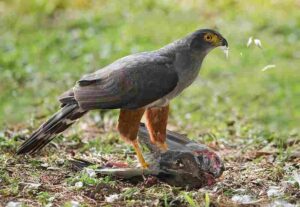
A Recap Of The Main Dietary Components for Hawks
Hawks are known for their predatory nature and their ability to adapt to various environments. As consumers and predators, they rely on a diverse range of food sources to meet their dietary needs. In this section, we will explore some of the most common food sources for hawks, shedding light on their feeding habits and the role they play in the ecosystem.
One of the primary food sources for hawks is small mammals. These include rodents such as mice, voles, and rats. Hawks are skilled hunters and have the ability to locate and capture these small mammals with precision.
They use their sharp beaks and talons to grasp and immobilize their prey, ensuring a successful hunt. By preying on these small mammals, hawks help to control their populations, preventing them from becoming overabundant and causing damage to the ecosystem.
In addition to small mammals, hawks also feed on a variety of birds. Smaller birds such as sparrows, finches, and warblers are often targeted by hawks. Hawks have excellent eyesight, allowing them to spot their prey from great distances.
They use their aerial hunting techniques to swoop down and catch these birds in mid-flight. By preying on smaller birds, hawks help to regulate their populations and maintain a balance in the avian community.
Hawks are opportunistic feeders and will also consume reptiles and amphibians. Snakes, lizards, and frogs are among the reptiles and amphibians that hawks include in their diet.
These creatures provide a valuable source of nutrition for hawks, especially in areas where small mammals and birds may be scarce. By diversifying their diet, hawks are able to adapt to different environments and ensure their survival.
Insects also form an important part of a hawk’s diet. They are a readily available food source and provide hawks with essential nutrients. Hawks will feed on a variety of insects, including grasshoppers, beetles, and dragonflies. Insects are particularly abundant during the warmer months, making them a reliable food source for hawks during this time.
While hawks primarily feed on live prey, they are also known to scavenge on occasion. They may consume carrion, which refers to the decaying flesh of dead animals. This scavenging behavior allows hawks to take advantage of available food sources and supplement their diet when necessary.
It is important to note that the specific dietary components for hawks can vary depending on the species and the habitat they inhabit. Some hawks may have a more specialized diet, focusing on specific prey items that are abundant in their environment. Others may have a more generalist diet, consuming a wider range of food sources.
Hawks are versatile predators that rely on a diverse range of food sources to meet their dietary needs. Small mammals, birds, reptiles, amphibians, insects, and even carrion all contribute to the diet of hawks.
By consuming these various prey organisms, hawks play a crucial role in regulating populations and maintaining the balance of the ecosystem. Their adaptability and hunting skills make them formidable predators and essential components of the food chain.
